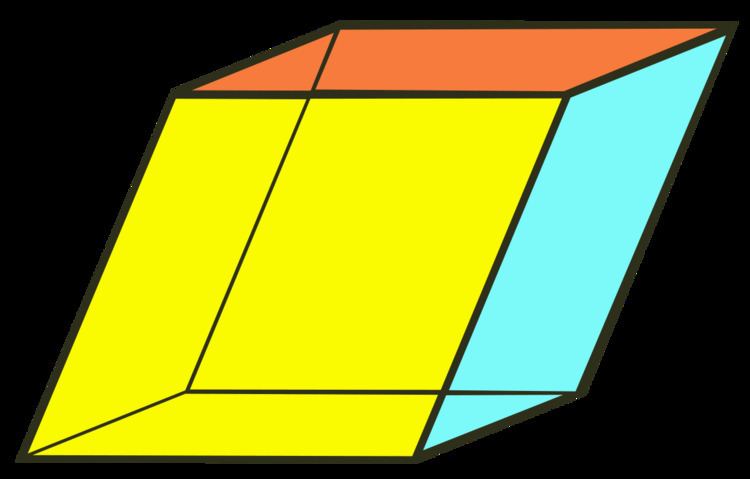 | ||
In geometry, a rhombohedron is a three-dimensional figure like a cube, except that its faces are not squares but rhombi. It is a special case of a parallelepiped where all edges are the same length. It can be used to define the rhombohedral lattice system, a honeycomb with rhombohedral cells.
Contents
In general the rhombohedron can have three types of rhombic faces in congruent opposite pairs, Ci symmetry, order 2.
Four points forming non-adjacent vertices of a rhombohedron necessarily form the four vertices of an orthocentric tetrahedron, and all orthocentric tetrahedra can be formed in this way.
Rhombohedral lattice system
The rhombohedral lattice system has rhombohedral cells, with 3 pairs of unique rhombic faces:
Special cases
Solid Geometry
For a unit rhombohedron (side length = 1) whose rhombic acute angle is θ and has one vertex is at the origin (0, 0, 0) with one edge lying along the x-axis the three vectors are
e1:
e2:
e3:
The other coordinates can be obtained from vector addition of the 3 direction vectors so that e1 + e2, e1 + e3, e2 + e3, and e1 + e2 + e3.
The volume of the rhombohedron whose side length is 'a' is a simplification of the volume of a parallelepiped and is given by
As the area of the base is given by
The internal diagonals of the rhombohedron shown in Fig. SG1 are interesting. Three of the internal diagonals (BG, CF, and DE) are all the same length. They are easily calculated from coordinate geometry once the coordinates of each vertex is known. Distance in a 3-d space is simply given by:
For example, for the unit rhombohedron with rhombic acute angle of 72, the three internal diagonals (BG, CF, and DE) are 1.543 and the long diagonal (AH) is 2.203. The volume of this rhombohedron is 0.8789, and the height is 0.9242.
